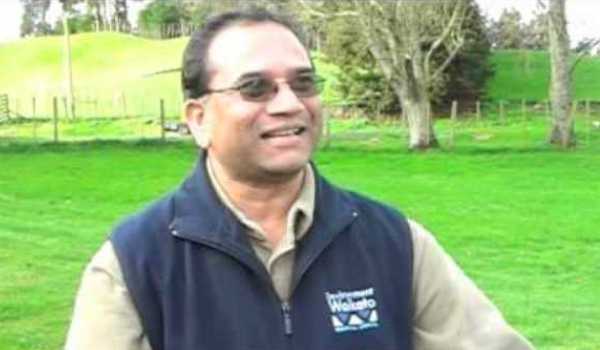By Bala Tikkisetty, sustainable agriculture advisor (technical) at Waikato Regional Council

Farmers and farm contractors can help protect the health of waterways by ensuring that any works they do in and around them don’t impact on bank stability, water quality and aquatic life.
Waikato Regional Council can provide advice to help ensure things are done the right way when planning any works around waterways and we have a range of relevant rules about what is permitted and what requires a consent.
In recent years, the council has received a range of complaints about inappropriate in-stream works, resulting in a number of formal investigations and prosecutions.
The council is keen to lift awareness about the issues involved and the responsibilities of farmers and others when carrying out works in and around waterbodies. These can include stream straightening and excavating the beds of rivers and lakes for a wide range of purposes (including to install bridges or culverts), removing build-up of sediment or managing an unstable stream.
Sediment build-up or instability may be caused by stock trampling the banks, or cultivation of paddocks too close to waterways without an adequate buffer zone or enough sediment control. It is important to ensure these causes are dealt with to avoid recurring problems.
The effects of such problems on aquatic life and water quality can be exacerbated through inappropriate in-stream excavations, or inappropriate removal of bank vegetation.
Besides hurting water quality and aquatic habitats through increased sedimentation, destabilisation of banks and beds can cause changes to the course of rivers and streams, resulting in loss of land and property and infrastructure damage.
Structures such as bridges, culverts and water intakes are essential features of most farms and they must be well planned and constructed to ensure they are not at risk from the stream, and to protect in-stream values. These structures can obstruct or divert flows, or obstruct fish passage up and down rivers, blocking access to spawning grounds and migration generally, including to areas that have been used as traditional or recreational fisheries.
The Resource Management Act clearly prohibits any disturbances to river, stream and lake beds unless the disturbance is specifically allowed by a resource consent issued by a regional council. That’s why council policies cover the use, erection, reconstruction, placement, alteration, extension, removal or demolition of structures in, on, under or over the beds of rivers, streams and lakes and any disturbance of the bed as well, such as stream straightening or cleaning. Those planning such works are wise to check out the rules first.
Waikato Regional Council also recognises there are a range of activities in and around waterways that are not harmful. The regional plan has many rules enabling “everyday” activities, provided certain conditions are followed to avoid the sorts of problems described above. These rules identify what activities are permitted without consents, and the conditions the activities must meet.
It’s important to check the regional rules and to seek good quality advice when planning any activity in or near a stream to prevent unlawful activity. Doing so will ensure our rivers and streams are properly cared for as complex, delicate ecosystems in a productive agricultural landscape.
I also suggest all farmers and farm contractors read the recently updated informative document called Farmer’s Guide to Environmental Rules on our website: waikatoregion.govt.nz/for-farmers.
- Bala Tikkisetty is a sustainable agriculture advisor (technical) at Waikato Regional Council. Contact him atbala.tikkisetty@waikatoregion.govt.nz or call 0800 800 401.
